Euclid : Book 1 : Definition 15
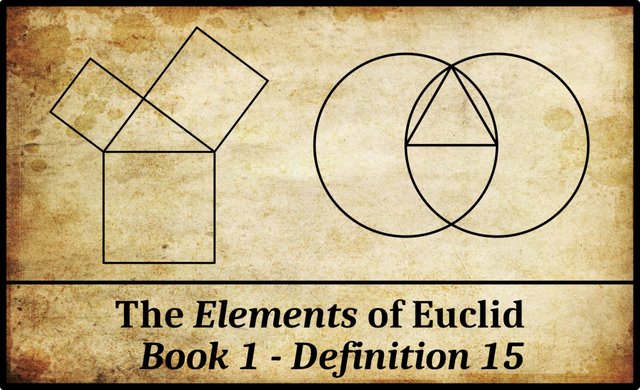
In Book 1 of Euclid’s Elements, Definition 15 reads (Fitzpatrick 6):
| Greek | English |
|---|---|
| ιεʹ. Κύκλος ἐστὶ σχῆμα ἐπίπεδον ὑπὸ μιᾶς γραμμῆς περιεχόμενον [ἣ καλεῖται περιφέρεια], πρὸς ἣν ἀφ ̓ ἑνὸς σημείου τῶν ἐντὸς τοῦ σχήματος κειμένων πᾶσαι αἱ προσπίπτουσαι εὐθεῖαι [πρὸς τὴν τοῦ κύκλου περιφέρειαν] ἴσαι ἀλλήλαις εἰσίν. | 15. A circle is a plane figure contained by a single line [which is called a circumference], (such that) all of the straight-lines radiating towards [the circumference] from one point amongst those lying inside the figure are equal to one another. |
Having defined a figure (σχῆμᾰ [schēma]) in general in Definition 14, Euclid’s devotes the next eight definitions to defining specific plane figures (σχῆμα ἐπίπεδον [schēma epipedon]):
Definitions 15-17: Circles
Definition 18: Semicircles
Definitions 19-22: Rectilineal figures, including triangles, quadrilaterals, and polygons
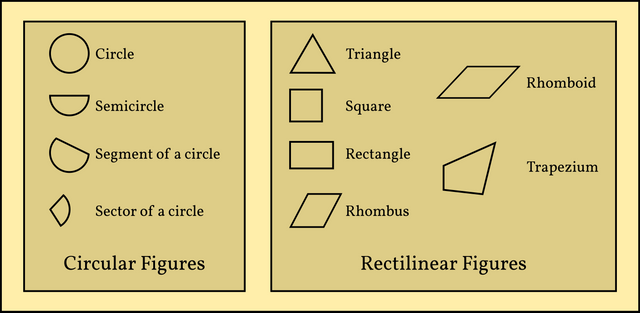
Euclid’s definition of a circle sounds strange to the ears of modern mathematicians. That is probably a consequence of an important distinction between Euclidean circles and circles as understood by today’s geometricians:
Note that a circle for Euclid is a two-dimensional figure. But in modern mathematics, usually the word circle refers to what Euclid calls the circumference of a circle. (David E Joyce)
David Joyce also reminds us that to define something is not to prove that it actually exists:
A definition such as this describes what circles are. Definitions do not guarantee the existence of the things they define. The existence of circles follows from a postulate, namely, Postulate 1:3. (Joyce. See also Heath 184)
Euclid’s Definition
As Thomas Heath points out, there is nothing particularly original in Euclid’s definition of a circle. In one of his dialogues, Plato also defined the round in terms of equal radii:
Round [στρογγῠ́λον] is surely that whose extremities are equidistant in every direction from the middle. (Parmenides 137 e, Cooper 372)
The word Parmenides uses, στρογγῠ́λον [strongulon], means round, spherical, or circular (Liddell & Scott 1439).
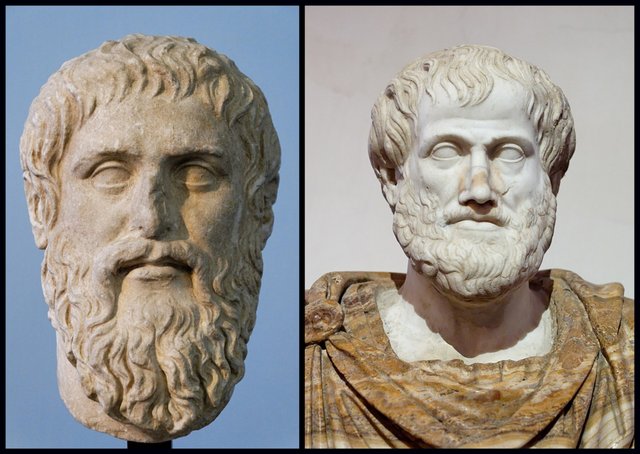
Aristotle also defined the circular in terms of this property:
The following suggestions will help to give your language impressiveness. Describe a thing instead of naming it: do not say ‘circle’, but ‘that surface which extends equally from the middle every way’. (Rhetoric 1407 b 25-27, Barnes 4809)
This identifies the circle with the entire disc, and not just the circumference. In another of his works, Aristotle anticipates Euclid’s definition in terms of equal radii:
Again, since the whole seems—and has been assumed—to revolve in a circle, and since it has been shown that outside the farthest circumference there is neither void nor place, from these grounds also it will follow necessarily that the heaven is spherical. For if it is to be rectilinear in shape, it will follow that there is place and body and void without it. For a rectilinear figure as it revolves never continues in the same room, but where formerly was body, is now none, and where now is none, body will be in a moment because of the changing positions of the corners. Similarly, if the world had some other figure with unequal radii, if, for instance, it were lentiform, or oviform, in every case we should have to admit space and void outside the moving body, because the whole body would not always occupy the same room. (On the Heavens 287 a 12-23, Barnes 1041)
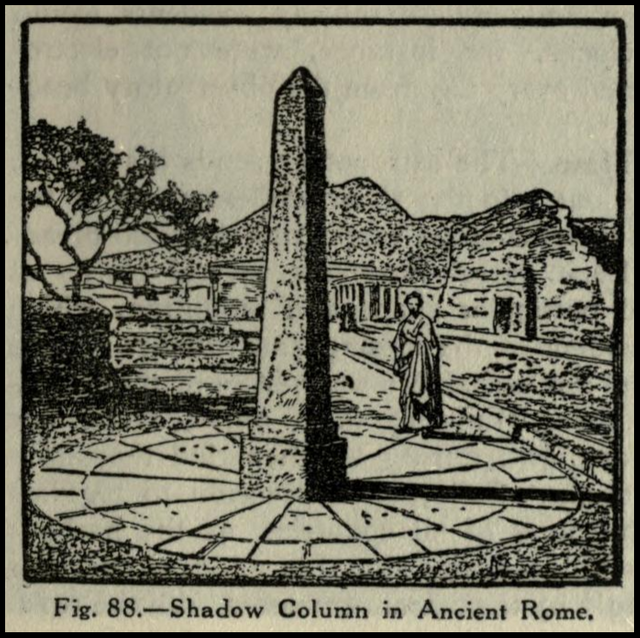
Three Dimensions
Three of Euclid’s successors—Hero of Alexandria, Proclus, and Simplicius—all pointed out that the centre of the circle is not the only point of which it may be said that all of the straight-lines radiating from it to the circumference are equal to one another. This is also true of every point on the line that passes through the centre of the circle and is perpendicular to the plane of the circle. Proclus calls such a point a pole of the circle. It is one of the end points of a gnomon standing at the centre of the circle (Morrow 121).
Euclid, however, specifies in his definition that the centre is unique among the points lying inside the figure—ie in the plane of the circle.
Textual Criticism
The reader will have noticed that Richard Fitzgerald’s Greek text of Definition 15 contains two passages in square brackets. His English translation also contains a passage in round parentheses:
This edition of Euclid’s Elements presents the definitive Greek text—i.e., that edited by J. L. Heiberg (1883–1885)—accompanied by a modern English translation, as well as a Greek-English lexicon. Neither the spurious books 14 and 15, nor the extensive scholia which have been added to the Elements over the centuries, are included. The aim of the translation is to make the mathematical argument as clear and unambiguous as possible, whilst still adhering closely to the meaning of the original Greek. Text within square parenthesis (in both Greek and English) indicates material identified by Heiberg as being later interpolations to the original text (some particularly obvious or unhelpful interpolations have been omitted altogether). Text within round parenthesis (in English) indicates material which is implied, but not actually present, in the Greek text. (Fitzpatrick 4)
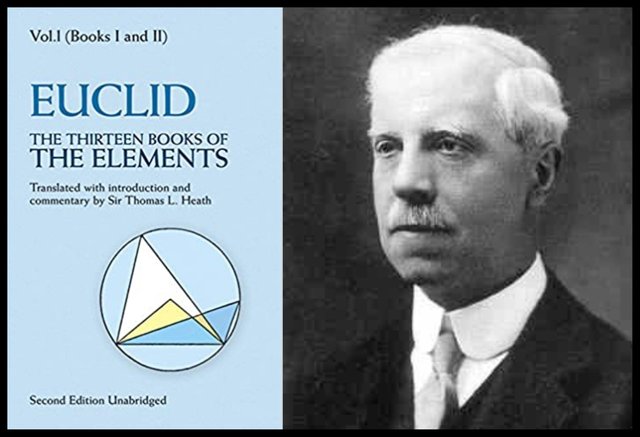
Thomas Heath remarks:
The words ἣ καλεῖται περιφέρεια, “which is called the circumference,” and πρὸς τὴν τοῦ κύκλου περιφέρειαν, “to the circumference of the circle,” are bracketed by Heiberg because, although the MSS. have them, they are omitted in other ancient sources, viz. Proclus, Taurus, Sextus Empiricus and Boethius, and Heron also omits the second gloss. The recently discovered papyrus Herculanensis No. 1061 also quotes the definition without the words in question, confirming Heiberg’s rejection of them (see Heiberg in Hermes xxxviii., 1903, p. 47), The words were doubtless added in view of the occurrence of the word “circumference” in Deff. 17, 18 immediately following, without any explanation. (Heath 184)
Heiberg also corrected a typographical error, restoring the fourth letter (σ, sigma) to προσπίπτουσαι. Heiberg’s apparatus criticus for this definition reads as follows:

[10] ἣ καλεῖται περιφέρεια] omitted by Proclus, Taurus, Sextus Empiricus, and Philoponus, Boethius; only present in the codices of Hero, Psellus, Capella, and Campanus.
[12] προπίπτουσαι] b, corrected by a second hand.
πρὸς τὴν τοῦ κύκλου περιφέρειαν] omitted in Proclus, Taurus, Hero, Sextus Empiricus, Psellus, Capella, and Boethius; present in the codices of Philoponus, and Campanus (they have been erased in b). (Heiberg 5)
b refers to an 11th-century manuscript of the Elements in the Communal Library in Bologna, the Biblioteca communale dell’Archigennasio.
In his edition of Euclid’s works of 1814-1818—original Greek with translations into Latin and French—François Peyrard includes both spurious passages (Peyrard 2). In his apparatus criticus, he only draws attention to the second bracketed passage, noting that it is lacking in three of the twelve manuscripts he consulted for his edition (Peyrard 453).
And that’s a good place to stop.
References
- Jonathan Barnes (editor), The Complete Works of Aristotle, Volumes 1 & 2, Princeton University Press, Princeton, NJ (1984)
- John M Cooper, Plato: Complete Works, Hackett Publishing Company, Indianapolis (1997)
- Richard Fitzpatrick (translator), Euclid’s Elements of Geometry, University of Texas at Austin, Austin, TX (2008)
- Thomas Little Heath (translator & editor), The Thirteen Books of Euclid’s Elements, Second Edition, Dover Publications, New York (1956)
- Johan Ludvig Heiberg, Heinrich Menge, Euclidis Elementa edidit et Latine interpretatus est I. L. Heiberg, Volumes 1-5, B G Teubner Verlag, Leipzig (1883-1888)
- Henry George Liddell, Robert Scott, A Greek-English Lexicon, Eighth Edition, American Book Company, New York (1901)
- Glenn R Morrow (translator), Proclus: A Commentary on the First Book of Euclid’s Elements, Princeton University Press, Princeton, NJ (1970)
- François Peyrard, Les Œuvres d’Euclide, en Grec, en Latin et en Français, Volumes 1-3, Charles-Frobert Patris, Paris (1814, 1816, 1818)
Image Credits
- Plato: Roman Copy of a Portrait made by Silanion (c 370 BCE) for the Academy in Athens, Centrale Montemartini, Capitoline Museums, Rome, © Marie-Lan Nguyen, Creative Commons License
- Aristotle: Roman Copy in Marble of a Greek Bronze Bust by Lysippos (c 330 BCE), with Modern Alabaster Mantle, Museo Nazionale Romano di Palazzo Altemps, Jastrow (photographer), Public Domain
- A Primitive Gnomon, Bruno Hans Bürgel, Stella Bloch (translator), Astronomy for All, Page 67, Cassell and Company, Ltd, London (1911), Public Domain
- Thomas Little Heath: Public Domain
- Euclid: The Thirteen Books of the Elements: Paul E Kennedy (cover designer), © Dover Publications, Fair Use
Online Resources
